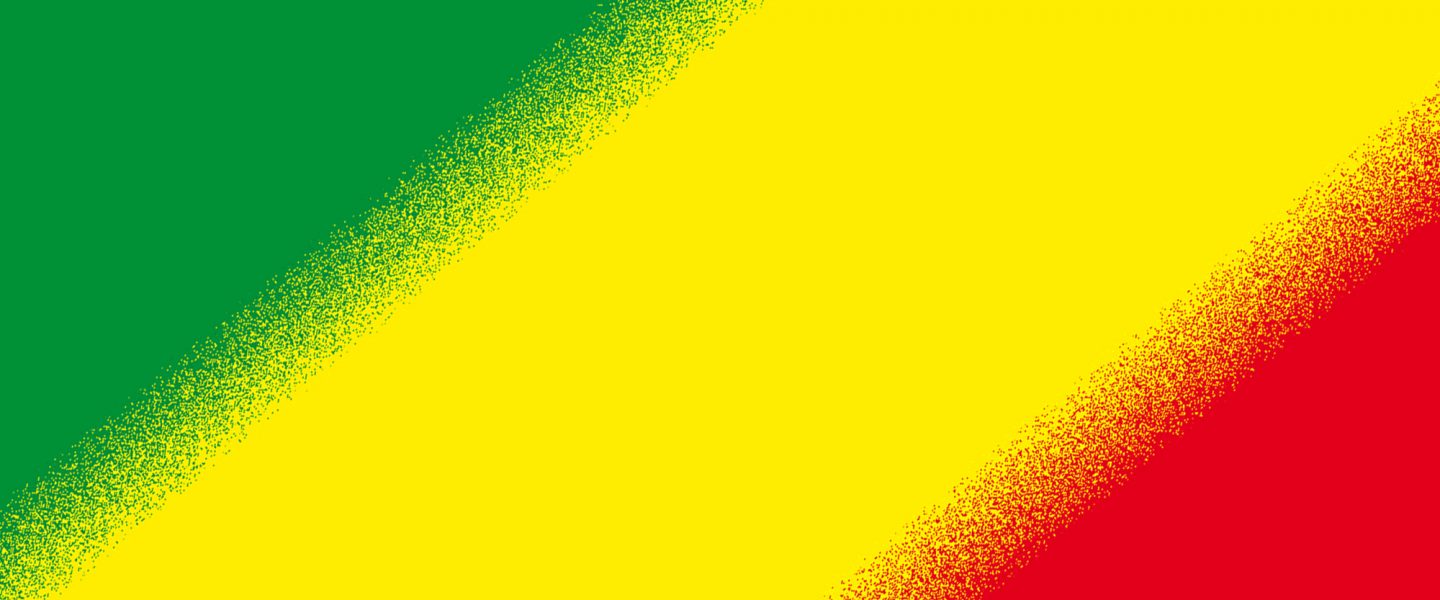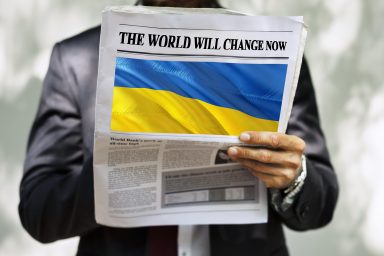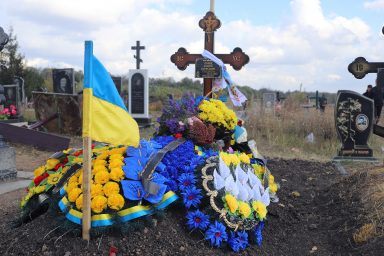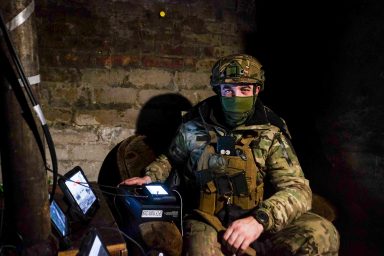New rules for access to the areas near the front line are making it challenging to work as a journalist in Ukraine. These restrictions could have a heavy price — less coverage of the Russian invasion.
|
Listen To This Story
|
Green, yellow, and red. The colors known worldwide as the colors of traffic lights now also direct where journalists can work in Ukraine. Red zones are obviously a no-go; yellow is only allowed with a press officer, while green is the color of freedom and means no restrictions.
Some areas that used to be accessible to reporters are now closed or restricted to having a press officer following your every move and listening to all your conversations. If you break the rules, it may mean the cancellation of your press accreditation without the possibility of renewal.
Let me first make it clear that I am biased. As a journalist who frequently covers the Russian invasion near the front line, I am frustrated and annoyed by the new rules, which were implemented in March. They limit my ability to tell the stories of human suffering in the war zone, which has been my focus since I moved to Ukraine in 2019.
During a recent trip to the Donbas, I had to cancel four stories. Two were in civilian areas which were suddenly in the red zone and closed. That meant that I could not tell readers about the destruction caused by Russian attacks and the terrible conditions for the remaining locals.
I also had to cancel reporting trips with two Ukrainian military brigades. The brigades were happy to take me but weren’t allowed due to the new rules. This meant two fewer articles about who the soldiers defending Ukraine really are. Such stories give soldiers names and faces, so people far away can see them as more than just numbers in the daily casualty count. Such stories make the war real.
What Is the Government Thinking?
Under the new rules, the red zones begin 15 kilometers (~9 miles) from the front line in certain areas. Previously, reporters could drive as close as one kilometer away (~.6 mile). Some people speculate that the government has done this to hide Ukrainian troop movements concerning the looming counteroffensive. Other people say the new rules are there to protect journalists from danger. Recently, La Repubblica journalist Corrado Zunino was wounded and Ukrainian journalist Bohdan Bitik was killed in Kherson. At the time, both journalists were (allegedly) reporting in red zones without permission.
Others speculate that the Ukrainian military is restricting access now because some journalists have revealed military positions in their reporting.
So, yes. There have always been restrictions on the work of war correspondents, and some of them are warranted. But I fear that the Ukrainian government has gone too far.
I think the new restrictions are simply an attempt by the Ukrainian army to control the press.
Recently, many stories in the foreign and domestic media have highlighted ammunition problems and struggles in the Ukrainian Army overall.
The Ukrainian Armed Forces hasn’t officially explained its rationale for the new rules. However, Natalia Humeniuk, a spokesperson for Ukraine’s southern operational command, has said that the restrictions were implemented to ensure “proper work with respect to the security situation and the army’s needs.”
I think the new restrictions are simply an attempt by the Ukrainian army to control the press.
Recently, many stories in the foreign and domestic media have highlighted ammunition problems and struggles in the Ukrainian army overall. For example, in early March The Kyiv Independent wrote about how Ukrainian troops don’t feel protected while defending Bakhmut, a hotspot right now.
The Ukrainian Presidential Office probably does not like that story very much. It probably does not like this one, either. The Washington Post recently quoted a Ukrainian battalion commander as saying that many Ukrainian troops are inexperienced and lack weapons, and that his battalion has had many casualties. Soon after, the battalion commander was demoted to deputy battalion commander and stationed at a training center, according to the Kyiv Post.
Late last month, the government’s culture minister weighed in on this topic. “We are under martial law, and theoretically there should be a censor at every media outlet. The same goes for military personnel on the battlefield,” said Oleksandr Tkachenko, Ukraine’s minister for culture and information policy, according to DW.
It Was Much Better Before
Before the Ukrainian press restrictions took effect in March, journalists could drive to hotspots such as Bakhmut and Avdiivka without problems and without the presence of a press officer as long as they only talked to civilians. This meant that journalists could get really close and see the impact of the war on the civilian population. It was an ideal situation for journalists such as myself and highly valued.
For example, I joined an evacuation team last year which traveled to the town of Makiivka, in the Luhansk region, to rescue an elderly man with a broken hip. The Russian positions were only half a mile away. When we arrived, the man suddenly decided that he didn’t want to leave Makiivka. While the evacuation team was desperately trying to change his mind, a Ukrainian soldier nearby warned that a Russian drone had been spotted in the air and that an attack was imminent.
“You have five minutes,” said the Ukrainian soldier. Time was running out — tick-tock. After much discussion, the elderly man finally agreed to evacuate.
Stories like these — dramatic tales of life and death — capture people’s attention far away. Stories such as these show the true horror of the Russian invasion of Ukraine.
Such reports are no longer possible.
 Of course, it is still much better to work in Ukraine than in Russia, with its near-total crackdown on media freedom since the launch of its “special military operation” last February. Many Russian journalists are imprisoned there and even Evan Gershkovich, an American journalist for The Wall Street Journal, was recently jailed. Reporters Without Borders ranks Russia as 155th out of 180 countries worldwide regarding press freedom. Ukraine is 106th.
Of course, it is still much better to work in Ukraine than in Russia, with its near-total crackdown on media freedom since the launch of its “special military operation” last February. Many Russian journalists are imprisoned there and even Evan Gershkovich, an American journalist for The Wall Street Journal, was recently jailed. Reporters Without Borders ranks Russia as 155th out of 180 countries worldwide regarding press freedom. Ukraine is 106th.
As a freelance journalist, I know that some editors will lose interest if access is so restricted that stories are less impactful and cannot catch people’s attention. Will the large media corporations keep sending reporters to Ukraine if those reporters can’t get the real story? And if we can’t get the real story how will that impact this war?
The Ukrainian Operational Command South, which controls the southern part of the frontline, has barred journalists from working in large parts of the Kherson and Mykolaiv regions and made almost everything else a yellow zone. It’s impossible to write authentic stories about civilian life if you have a press officer breathing down your neck.
People don’t give honest opinions if a military official stands a few feet away listening to every word. Those interviews have very little value. Trust me, I’ve experienced this many times.
With the new rules, journalism near the front line simply dies. If the restrictions are not removed, thousands of essential stories will never be told. I fear that these restrictions will result in declining interest in the Russian assault on Ukraine for people following the news thousands of miles away in their living rooms.
And if the world loses interest in this war, what happens to Ukraine?




